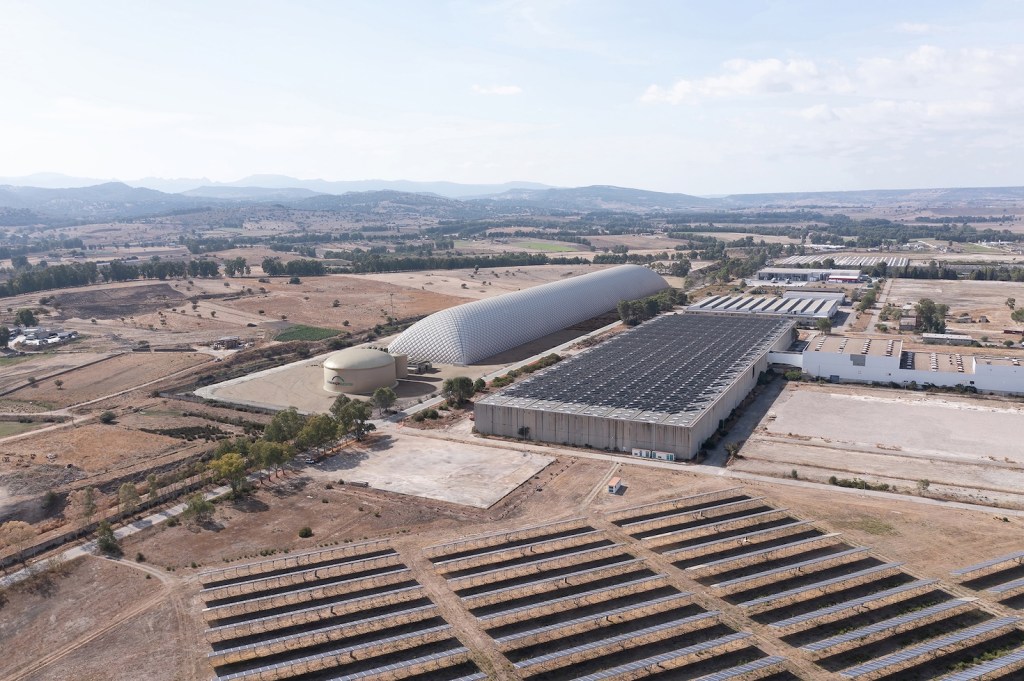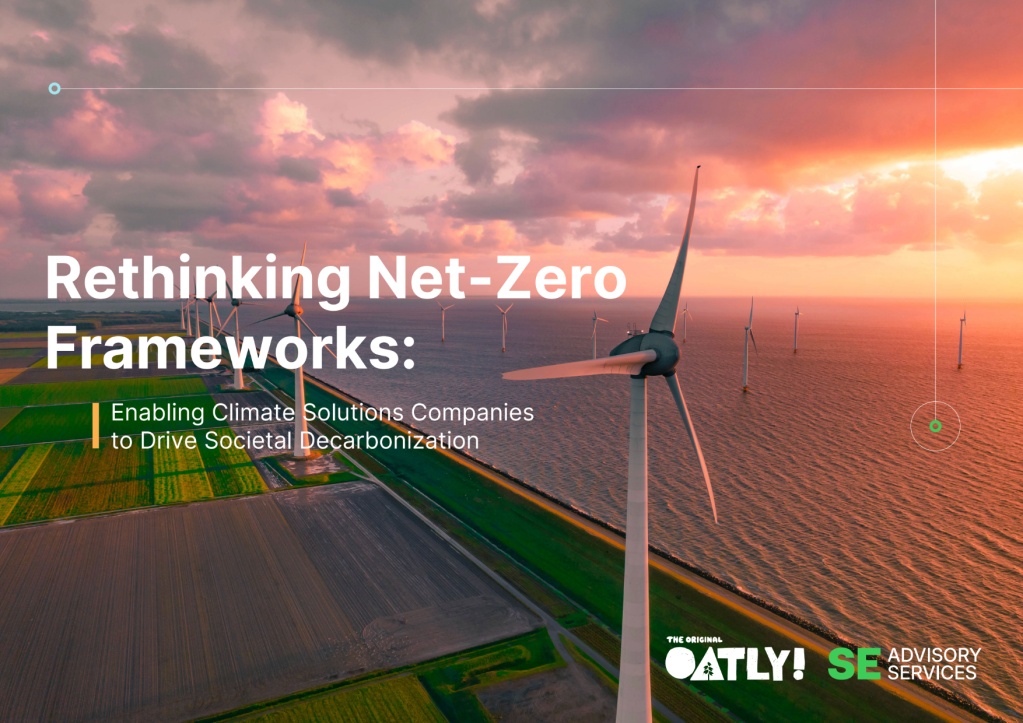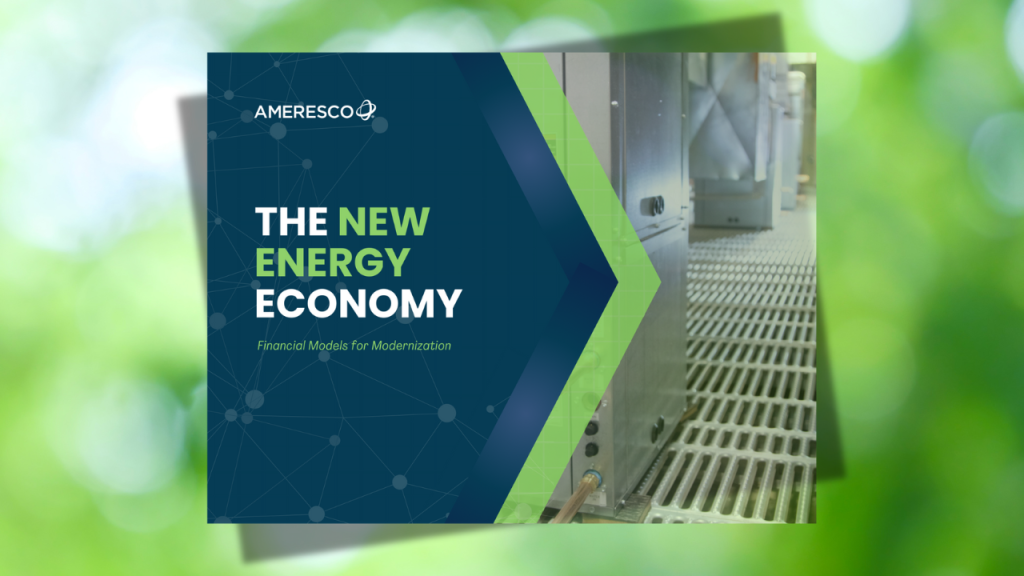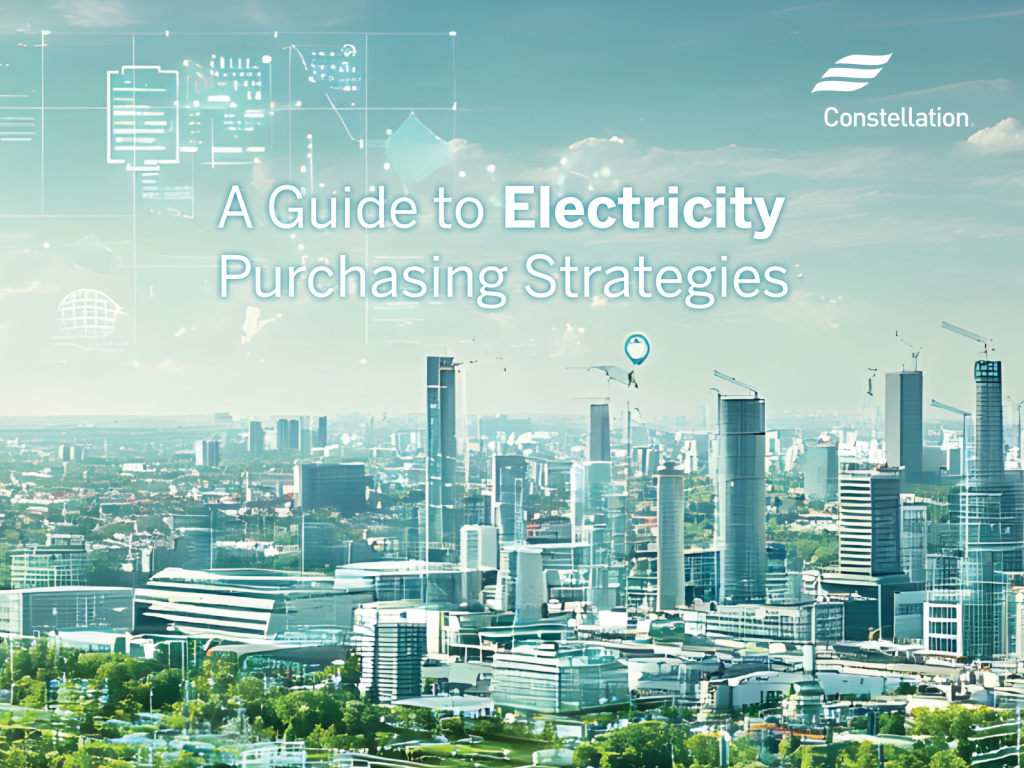This Google-backed startup makes batteries that last up to 24 hours
Energy Dome has signed contracts for projects in India, Italy and the U.S. Read More

- Google plans to use Energy Dome’s technology in multiple, unspecified locations.
- Utility Engie already uses the startup’s system in Sardinia, Italy.
- Rival options include flow batteries, hydrogen fuel cells and pumped hydropower.
Google is investing an undisclosed sum in Energy Dome, a startup developer of long-duration battery technology that pairs with solar, wind and other intermittent renewable sources to provide clean power around the clock.
Energy Dome’s CO2 Battery uses liquid carbon dioxide to store electricity as it is generated. When the power source shuts off, the gas expands, running turbines to release energy to the grid. The initial edition of the technology can dispatch 20 megawatts for up to 10 hours. A future version would provide five times that capacity, according to the company’s founder and CEO, Claudio Spadacini.
Google plans to support “multiple” commercial deployments of Energy Dome’s technology — already being used commercially in Sardinia, Italy — the company said in a July 25 blog post. Generally, these installations would be sited near solar and wind facilities. “Solar is very suitable and quite predictable,” said Spadacini.
Google didn’t disclose the locations that would be touched by the new partnership, and it declined further comment about terms of the relationship.
Strong commercial potential
“Long-duration energy storage has the potential to commercialize much faster than some of the other advanced clean energy technologies in our portfolio,” said Google energy strategists Ainhoa Anda and Michelle Chang in the blog. “This means we can use it in the near term to help the electricity system grow more flexibly and reliably, alongside other tools we’re developing, such as data center demand response.”
Energy storage deployments are expected to grow 35 percent for 2025, with a projected 94 gigawatts of additional capacity, according to researcher BloombergNEF. Currently, the most dominant technology for stationary applications related to renewable energy are lithium-ion chemistries.
The price of that technology is appropriate for applications requiring less than four hours of backup electricity during peak demand hours but is tougher to justify for long-duration applications, said Sam Jaffe, principal analyst at consulting firm 1019 Technologies. The artificial intelligence buildout offers one compelling use case.
“The data center boom is coming, and that is an ideal application for longer duration storage paired with solar,” said Jaffe. “You could do a completely renewable data center that way.”
Innovation: Using CO2 to reduce CO2
Energy Dome’s technology involves a tent-like structure resembling an enclosed sports center that needs a lot of space: 10 acres for the small version of the battery. Still, that’s less than 10 percent of the space in a typical solar-plus-storage installation, Spadacini said.
Competitive approaches include flow batteries, which use electrolytes to offer increased capacity, hydrogen fuel cells and pumped hydropower. The U.S., for example, has at least 100 gigawatts of pumped hydro, much of it located next to nuclear sites.
One advantage of Energy Dome’s technology is the well-established supply chain of equipment for liquid CO2. “We are not dependent on made-in-China products,” said Spadacini. That makes the technology eligible for some of the incentives offered under the One Big Beautiful Bill Act.
One challenge will be making sure that Energy Dome’s systems are kept leak-free. “CO2 is a very small molecule and will want to escape,” Jaffe said.
The backstory
Energy Dome was founded in 2019 with seed funding. The Italian startup announced an $11 million Series A raise from 360 Capital and Barclay’s in November 2021, and has raised more than $135 million in all.
The company employs about 90 people, with a small U.S. office in Cambridge, Massachusetts. Founder Spadacini, a mechanical engineer and serial entrepreneur, has also been involved with startups focused on biogas and geothermal applications.
Google is Energy Dome’s first publicly announced corporate contract. Engie is the startup’s partner in Italy. The company’s first U.S. utility contract is with Alliant Energy, which plans to use Energy Dome’s technology for a storage project that can keep 18,000 Wisconsin homes online for up to 10 hours.

Subscribe to Trellis Briefing
Featured Reports

The Premier Event for Sustainable Business Leaders
















